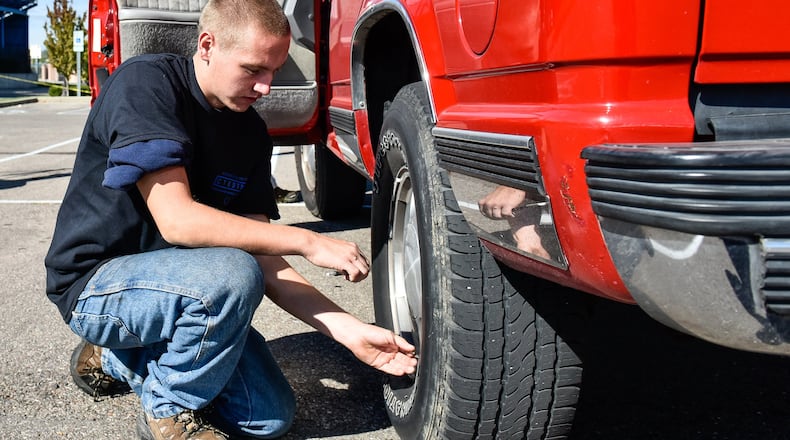What about other sensors on the car? Are they battery powered, too? -- Ken
RAY: Let me guess, Ken. You just had to replace a tire pressure sensor, and it cost you $85?
Yes, each tire pressure sensor uses its own battery. They tried hard-wiring them, but the car only got about 10 feet down the road before the wires got hopelessly wrapped around the car’s axles. So, battery power was really the only practical way to go for a sensor that lives inside a tire.
Most of them last about 7-10 years -- less if you do a lot of stop-and-go driving, because the sensors only send their signals to the car’s computer when the car is stopped.
When the battery finally does die, it can be replaced. But since most of the labor involves removing the tire from the wheel, it’s silly to not just replace the whole sensor, which comes with a new battery. And $85 is about the right price for the job.
You’d be miffed if you paid to have the sensor removed and the battery replaced, then have a 10-year-old sensor fail a few months later due to an age-related problem. So, we always replace the whole sensor.
We also use only original equipment sensors from the manufacturer. You can get cheaper, aftermarket sensors that claim to work on different cars. But in our experience, they sometimes have trouble communicating with the car’s computer. And then you’ve got the same problem: You’ve spent $50, and then you’ve got to spend $85 and start all over again.
The tire pressure sensors are the only sensors that are powered by their own batteries, Ken. Pretty much everything else on the car can be wired directly. It’s just the unique setting of the tire pressure sensor -- spinning inside a sealed tire -- that calls for a battery powered solution.
To address clutch issue, start with the primary
Dear Car Talk:
I’m one of the 11 people in America who still prefer a manual transmission. My 2002 Silverado 2500HD has an 8.1-liter gas engine and six-speed ZF manual transmission. The clutch linkage is hydraulic.
Since new, when pulling a trailer in the mountains, it sometimes has issues. It might suddenly develop 3-4 inches of free play at the top. It might go almost to the floor before releasing the clutch. Today, it did what I’ve feared; it wouldn’t release the clutch at all. I had to pull the pedal up and pump it a few times to get it working again.
Any idea what’s wrong? -- Norm
RAY: I noticed recently that real estate ads started referring to the “master bedroom” as the “primary bedroom.” So rather than wait to get hate mail on this answer, I’m going to start referring to the clutch master cylinder as the clutch “primary” cylinder.
That OK with everybody? I guess that’ll make the slave cylinder the “guest” cylinder.
Anyway, I’d start by replacing your clutch primary cylinder, Norm. The primary cylinder is essentially a hydraulic pump. It multiplies the force of your foot on the clutch pedal by sending hydraulic fluid, under pressure, to the guest cylinder, which moves the clutch release bearing, and disengages the clutch.
So why would I try the primary cylinder first? Because that cylinder only costs about $50. And even though bleeding the air out of it is tricky, at least the repair doesn’t require removing the transmission.
If the primary cylinder isn’t generating enough pressure -- if there’s an internal leak due to a failed seal, for instance -- the guest cylinder won’t move the release bearing far enough, and you’ll get free play and a low engagement point in the clutch pedal. So that certainly could be the problem.
And it’s likely exacerbated by heat. When you’re towing a trailer up mountains, the engine is generating a ton of heat, and the clutch is working as hard as it ever works.
If replacing the primary cylinder doesn’t fix it, then I would guess that your guest cylinder is leaking. That’s a much bigger job. The guest cylinder comes as one piece with the release bearing in this truck. And replacing those parts require removing the transmission. And if you’re doing that, you might as well put in a new friction disc and a clutch plate at the same time and have a whole new clutch.
And, in fact, if it comes to that, you should buy the whole clutch kit, which includes a new, prebled primary cylinder, too. That’s going to run you many hundreds of dollars, Norm. If it makes you feel any better, think of it as redoing the guest room.
Got a question about cars? Write to Ray in care of King Features, 628 Virginia Drive, Orlando, FL 32803, or email by visiting the Car Talk website at www.cartalk.com.
About the Author

